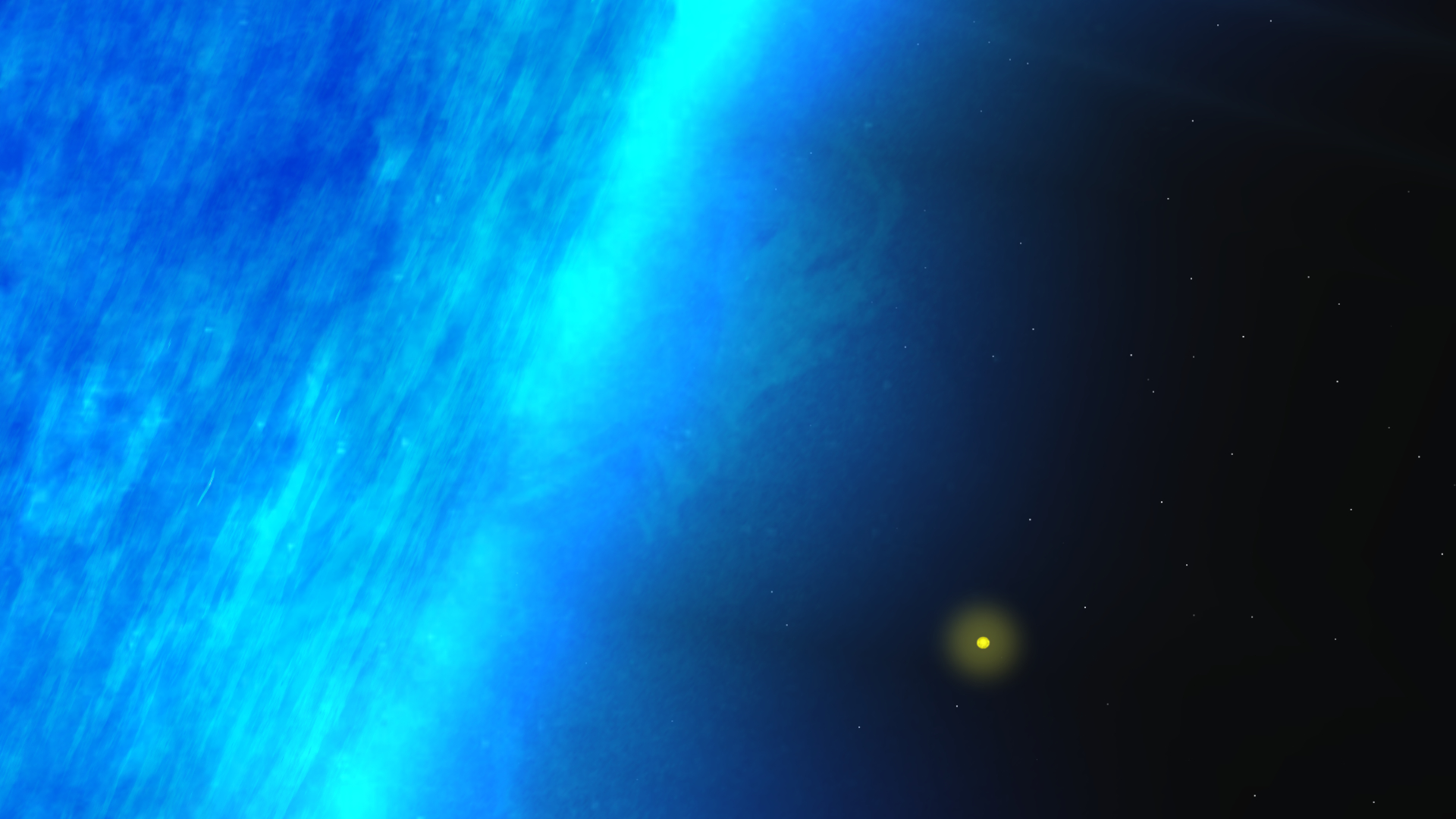The Christmas Burst

An unusual signal from a distant galaxy is thought to be the death of a supergiant star.
Gamma-ray bursts are the most luminous and mysterious explosions in the universe. The blasts emit surges of gamma rays—the most powerful form of light—as well as X-rays, and they produce afterglows that can be observed at optical and radio energies. On December 25, 2010, NASA's Swift spacecraft detected an unusually long-lasting gamma-ray burst in the constellation Andromeda. The event, nicknamed the "Christmas burst," produced high-energy emission for at least two hours. Astronomers think the most likely sources of these ultra-long gamma-ray bursts are blue supergiant stars. These stars hold about 20 times the sun's mass and may reach sizes 1,000 times larger than the sun. The star’s collapse gives rise to powerful jets that propel matter at nearly the speed of light in opposite directions. As they interact with matter in and around the star, the jets produce a spike of gamma rays. Watch the video to see an animation of the event.
The Christmas burst, also known as GRB 101225A, was an unusually long-lasting gamma-ray burst located 7 billion light-years away.

A likely source for the hours-long burst is the collapse and explosion of a blue supergiant star hundreds of times larger than the sun.

The star's collapse resulted in the emission of gamma-rays (magenta) detected by NASA's Swift spacecraft on Christmas Day 2010.

A blue supergiant star shown to scale with the sun.
For More Information
See NASA.gov
Credits
Please give credit for this item to:
NASA's Goddard Space Flight Center
-
Writer
- Francis Reddy (Syneren Technologies)
-
Animator
- Scott Wiessinger (USRA)
-
Producer
- Scott Wiessinger (USRA)
-
Scientists
- Bruce Gendre (French National Center for Scientific Research)
- Andrew Levan (University of Warwick)
Release date
This page was originally published on Thursday, December 24, 2015.
This page was last updated on Wednesday, May 3, 2023 at 1:49 PM EDT.
